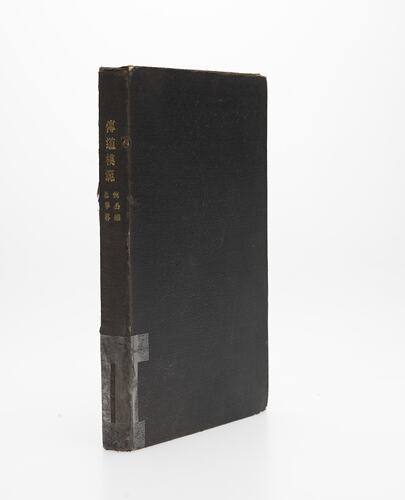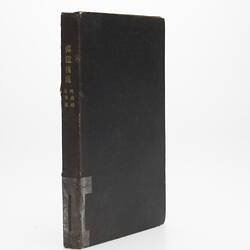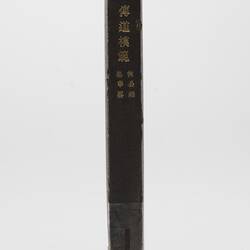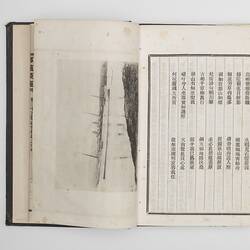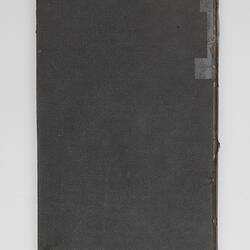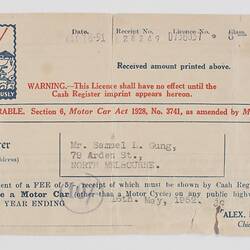Summary
Book with Chinese character text, published in Shanghai in 1898. It contains text relating to Christian life lessons and was probably brought to Australia by Samuel and Mary Gung when they migrated to Melbourne from Hong Kong on the ship Shansi in 1947, with their two children. It includes images and illustrations of Chinese buildings and people and a fold out colour map of China. The Gung family collection documents their experiences of migrating and living in Australia from the 1920s to the 1960s and the gradual easing of the White Australia policy.
Samuel Louey Gung, the son of Sydney Louey Gung, was born in Carlton in 1920 and died in Melbourne in 1993. He was educated in China and married Mary Mak in 1941. They migrated with two children in 1947 and had a further five children in Melbourne. Samuel worked with his father in the Geraldton Fruit Company.The Gung family collection documents their experiences of immigrating and living in Australia from the 1920s to the 1960s and the gradual easing of the White Australia policy.
Physical Description
Book, hard black cover (possibly not original) with gold embossed Chinese characters on spine. Possibly rice-paper leaves. Each page is double-folded and uncut and contains Chinese characters printed in black ink and images and illustrations of Chinese buildings and people, and a fold out colour map of China on tissue paper. A few images have captions in English.
Significance
The Gung family collection provides an invaluable representation of Chinese migration and settlement experiences in the Museum's migration collections. The family narrrative spans two generations, enabling the exploration of key themes such as the establishment and gradual dilution of the White Australia policy, Chinese businesses and the labour market, and family life. Many of the documents in the collection reflect the gradual easing of the restrictions on Asian immigration which occurred in the 1950s and 1960s, policy shifts which contributed to the Racial Discrimination Act of 1975. The objects compliment the photographs and documents and tell the story of a family's desire to continue their cultural practices and remember their cultural heritage while living in Australia from the 1920s to the 1960s.
More Information
-
Collecting Areas
-
Acquisition Information
Donation from Jeff Gung, 16 Jun 2014
-
Previous Owner
Mr Samuel Gung, Melbourne, Greater Melbourne, Victoria, Australia, circa 1940s
-
Inscriptions
All Chinese characters.
-
Classification
-
Category
-
Discipline
-
Type of item
-
Overall Dimensions - Closed
116 mm (Width), 224.5 mm (Height)
-
Keywords
Chinese Immigration, Immigration, Immigration Policies, Immigration Selection, Languages, Language Learning, White Australia Policy, Chinese Communities, Religions: Christianity
